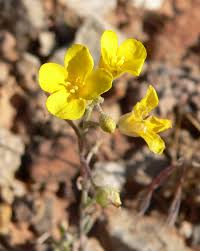
Lesquerella is a member of the mustard family that is native to the Southwest U.S. Agricultural Research Service scientists are now looking at it as a potential home-grown source of butanol. It’s a cleaner-burning alternative to gasoline that was produced around the world until after World War 2 when making the fuel from petroleum sources was more efficient than fermenting it from corn and molasses. Now that fermentation and product-recovery technology have advanced, a team at the ARS’ National Center for Agricultural Utilization Research in Illinois hopes to rekindle the production of butanol as a biobased fuel. They’ve begun conducting research to expand the list of butanol feedstocks that can be used, and they’re finding fiber-rich crop residues like wheat straw, sweet sorghum, and corn stover work well. The team’s efforts are part of a broader umbrella effort at the ARS to create new, value-added markets for commodities, especially if they could eventually be sustainable alternatives to petroleum-based fuels.
